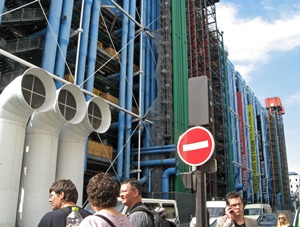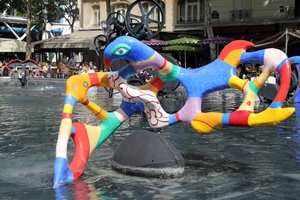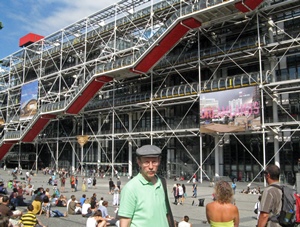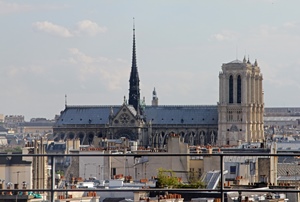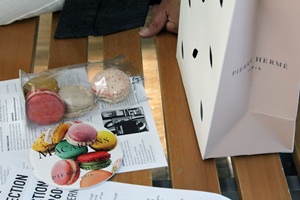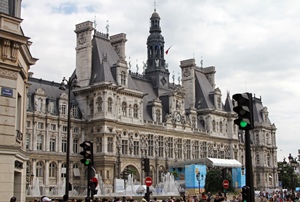
Hôtel de Ville Med Lrg Xlg |
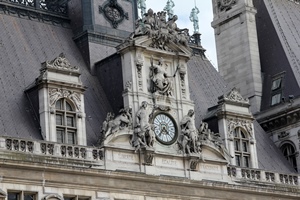
Hôtel de Ville (detail) Med Lrg Xlg |
From the Hôtel de Ville we headed up the Rue du Renard a couple of blocks until we reached the backside of the Pompidou Center. This side of the building is notable for deliberately exposing the inner workings of the building, with the parts of the various systems color-coded (blue for air, green for fluids, yellow for electricity and red for movement and safety).
It’s not notable for having an entrance, so we turned left to get around the building to where the front and the main entrance were. But on the way we were distracted by what appeared to be a colorful fountain on our left. We changed course to investigate.
The fountain, as it turns out, is called the Stravinsky Fountain, and is the work of two sculptors who installed it in 1983. The fountain holds sixteen moving, water-spouting figures which are themed to works by the 20th Century composer Igor Stravinsky, who lived in France in the 20’s and 30’s. The figures are of two very different styles, each style being contributed by a different sculptor: black, overtly mechanical sculptures were done by Jean Tinguely, and colorful, whimsical sculptures were the work of Niki de Saint Phalle.
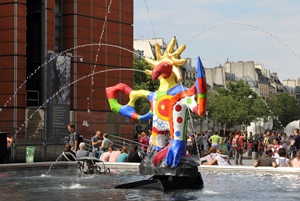
The Firebird Med Lrg Xlg |
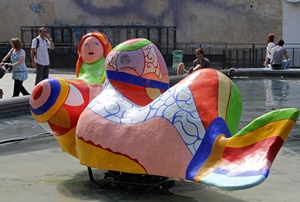
The Mermaid Med Lrg Xlg |
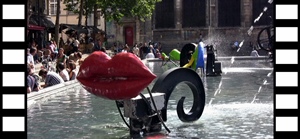
Several Mechanisms MP4-Sml MP4-Med WMV-HD |
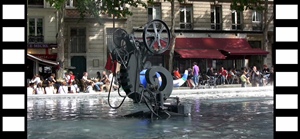
The Spiral, The Scorpion and The Nightingale MP4-Sml MP4-Med WMV-HD |
The square in front of the building is popular with street performers, but we didn’t pause to watch them, heading directly for the building entrance, where our Museum Passes got us in.
The Georges Pompidou Center, named for the President of France from 1969-74, opened in 1977 with the largest museum of modern art in Europe, a large library and a center for music and acoustic research. On the ground floor (actually on a lower level visible from the ground floor) we saw part of a live performance art presentation, with what appeared to be a group of female terrorists at a banquet table, all dressed up like Snow White.
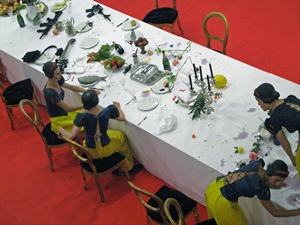
Snow White Terrorists Med Lrg |
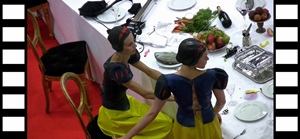
Snow White Terrorists MP4-Sml MP4-Med WMV-HD |
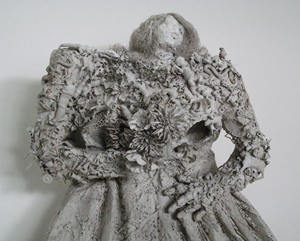
The Bride or Eva Maria, Niki de Saint Phalle (1963) Med Lrg |
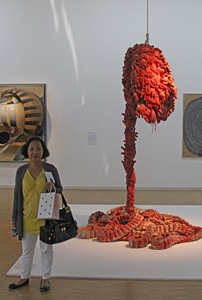
Nella and Weird Hanging Object Med Lrg Xlg |
Harold: Last night, when I plugged into my brain socket, I chose to virtually experience visits to great works of art throughout human civilization.Judge the likelihood for yourself.
Melvin: How clever of you! See anything you liked?
Harold: A few things – the reconstructed Colossus of Rhodes was pretty cool, and that Sistine Chapel thing was really colorful. But that 2010 black-and-white video of the naked woman with the barbed-wire hula-hoop! Now there’s a masterpiece!
We continued upstairs to the fifth floor (with some relief, speaking for myself) and found it occupied by the 1905-to-1960 collection. I won’t pretend that I fully understood all the Picassos, Matisses, Mirós, etc. etc., but they did seem to clearly be works of art. Well most of them, anyway.
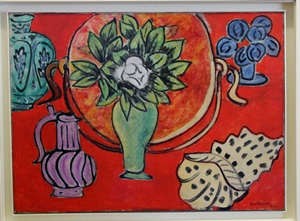
Still Life with Magnolia, Henri Matisse (1941) Med Lrg |
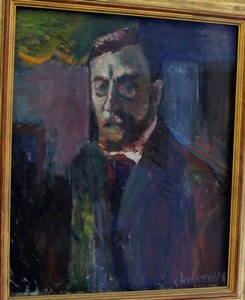
Self-Portrait, Henri Matisse (1900) Med Lrg |
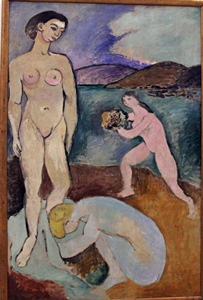
Luxury I, Henri Matisse (1907) Med Lrg |
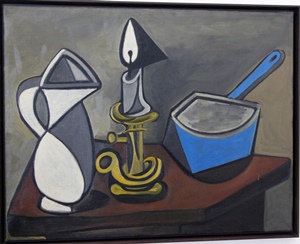
Enameled Casserole, Pablo Picasso (1945) Med Lrg |
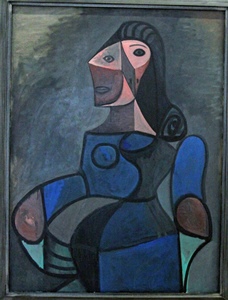
Woman in Blue, Pablo Picasso (1944) Med Lrg |
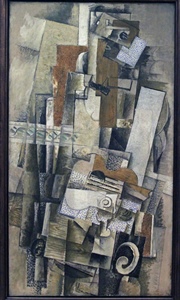
Man with a Guitar, Georges Braque Med Lrg |
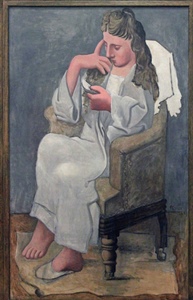
La Liseuse (The Reading Light), Pablo Picasso (1920) Med Lrg |
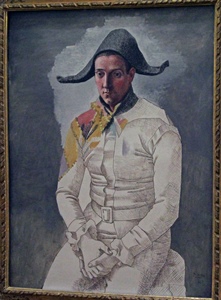
Harlequin, Pablo Picasso (1923) Med Lrg |
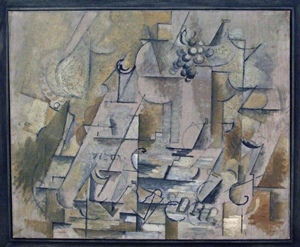
Fruit Bowl, Bottle and Glass, Georges Braque (1912) Med Lrg |
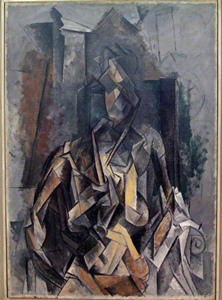
Woman Seated in an Armchair, Pablo Picasso (1910) Med Lrg |
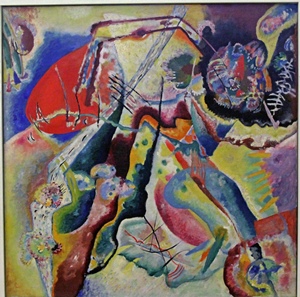
Picture with Red Marks, Vassily Kandinsky (1914) Med Lrg |
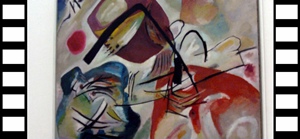
Kandinsky Paintings MP4-Sml MP4-Med WMV-HD |
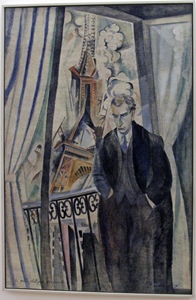
The Poet Philippe Soupault, Robert Delaunay (1922) Med Lrg |
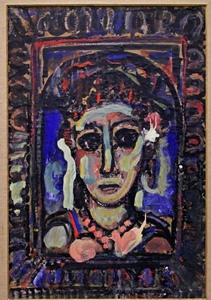
Flower of Evil, Georges Rouault (1930-45) Med Lrg |
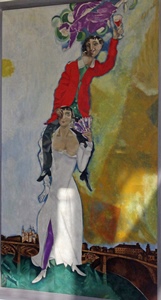
Double Portrait with a Glass of Wine, Marc Chagall (1917-18) Med Lrg Xlg |
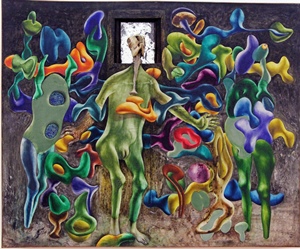
Fernelle Mirror II, Simon Hantaï (1953) Med Lrg |
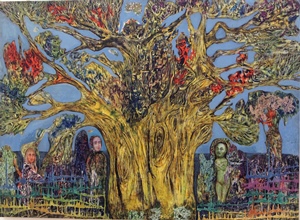
Painting (Composition), Simon Hantaï (1950-51) Med Lrg Xlg |
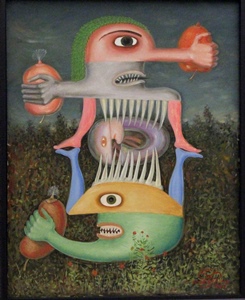
Totem of Wounded Subjectivity II, Victor Brauner (1948) Med Lrg |
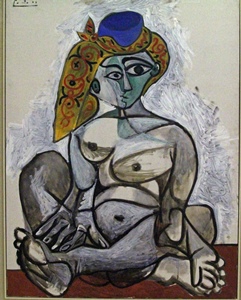
Nude Woman with Turkish Bonnet, Pablo Picasso (1955) Med Lrg |
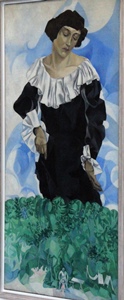
Bella with White Collar, Marc Chagall (1917) Med Lrg Xlg |
We took some pictures, ate some Pierre Hermé macarons and headed back to the hotel to rest up for the next day’s adventure, an expedition to the Palace of Versailles.
